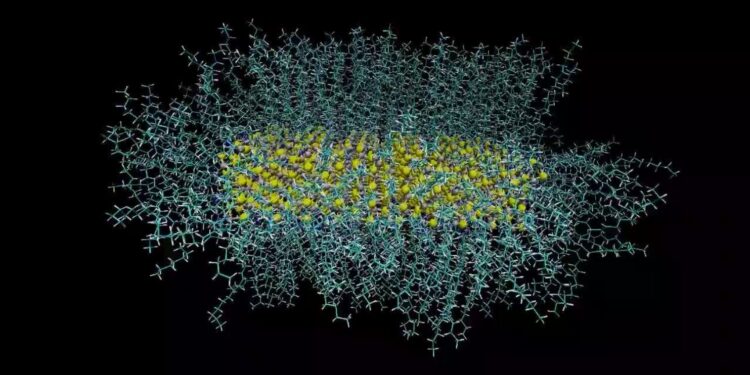Credit: Curtin University
From brighter TV screens to better medical diagnostics and more efficient solar panels, new research led by Curtin has discovered how to make more molecules stick to the surface of tiny nanocrystals, in a breakthrough that could lead to improvements in everyday technology.
Lead author Associate Professor Guohua Jia from Curtin’s School of Molecular and Life Sciences said the study investigated how the shape of zinc sulfide nanocrystals affected how the molecules, called ligands, , adhere to their surface. The full study titled “Deciphering the Surface Ligand Density of Colloidal Semiconductor Nanocrystals: Shape Matters” is published in the Journal of the American Chemical Society.
“Ligands play an important role in controlling the behavior and performance of zinc sulfide nanocrystals in various important technologies,” said Associate Professor Jia.
“In a finding that could open new possibilities for developing smarter, more advanced devices, our study found that flatter, more uniform particles called nanoplatelets allow more ligands to attach tightly, compared to other forms like nanodots and nanorods.
“By adjusting the shape of these particles, we were able to control how they interacted with their environment and make them more effective in a variety of applications. From brighter LED lights and displays to more efficient solar panels and more detailed medical imaging , the ability to control particle shapes could revolutionize product efficiency and performance.”
Associate Professor Jia said the discovery could improve the performance of devices called optoelectronic, which produce light or use light to perform their functions.
“Optoelectronics are important in many modern technologies, including telecommunications, medical devices and power generation,” said Associate Professor Jia. “The ability to efficiently manipulate light and electricity is essential to the advancement of faster, more efficient and more compact electronic systems.
“This includes LEDs, which convert electricity into light and are used in everything from light bulbs to TV screens to solar cells that convert light into electrical energy, powering devices that use sunlight.
“Other devices that could be advanced with this discovery include photodetectors that detect light and convert it into an electrical signal, such as in cameras and sensors, as well as laser diodes used in fiber optic communication that convert the electrical signals into light for data transmission.”
More information:
Deciphering the surface ligand density of colloidal semiconductor nanocrystals: shape matters, Journal of the American Chemical Society (2024). DOI: 10.1021/jacs.4c09592
Provided by Curtin University
Quote: Shaping nanocrystals: unlocking the future of screens, solar and medical technologies (October 13, 2024) retrieved October 14, 2024 from
This document is subject to copyright. Except for fair use for private study or research purposes, no part may be reproduced without written permission. The content is provided for informational purposes only.



